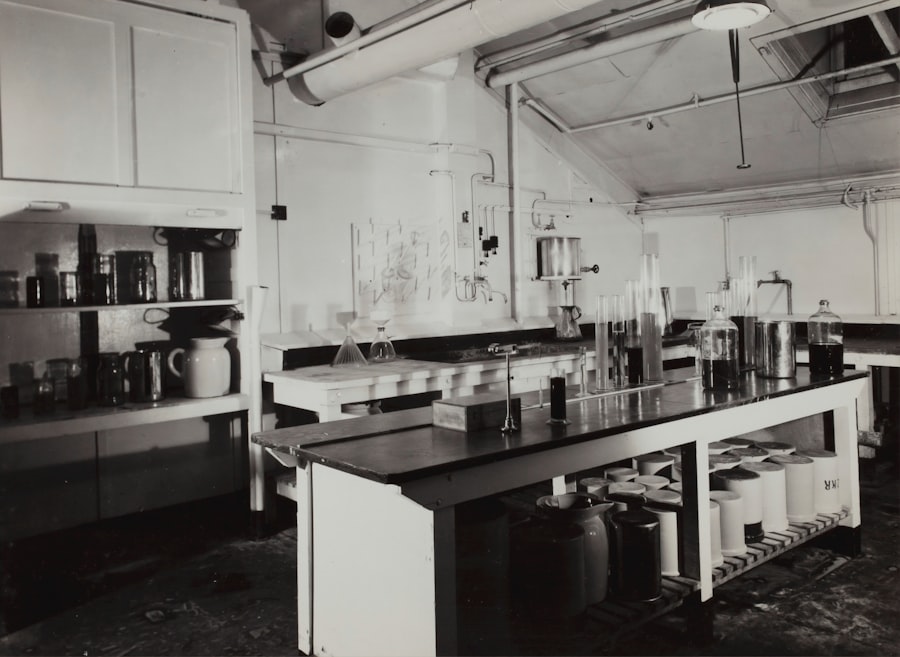Basic research, often referred to as fundamental or pure research, is primarily concerned with expanding our understanding of the underlying principles of the natural world. It seeks to answer questions that may not have immediate practical applications but are essential for the advancement of knowledge. For instance, a scientist studying the genetic makeup of a rare plant species may not have a specific application in mind, but the findings could contribute to broader biological theories or lead to discoveries in genetics, ecology, or conservation.
This type of research is characterized by its exploratory nature, often driven by curiosity and the desire to uncover new phenomena. In contrast, applied research is focused on solving specific, practical problems.
For example, researchers who develop new medical treatments based on the understanding of cellular processes are engaging in applied research. Their work is directly aimed at improving health outcomes or addressing specific diseases. While basic research lays the groundwork for applied studies, the latter is often more immediately relevant to societal needs, driving innovations that can enhance quality of life or address pressing challenges.
Key Takeaways
- Basic research seeks to expand knowledge and understanding, while applied research aims to solve practical problems and improve processes.
- The goals of basic research are to generate new theories and concepts, while applied research focuses on developing solutions and innovations.
- Basic research often uses theoretical and experimental methods, while applied research utilizes practical and empirical approaches.
- Basic research contributes to the advancement of knowledge, while applied research has direct practical applications and impact on society.
- Collaboration between basic and applied researchers is crucial for bridging the gap and maximizing the potential impact of research outcomes.
Differences in Goals and Objectives
Basic Research: Pursuing Fundamental Knowledge
Basic research aims to generate new knowledge without a direct focus on practical applications. Its objectives are often broad and exploratory, seeking to uncover fundamental truths about the universe. For instance, physicists studying the properties of dark matter are not necessarily looking for immediate applications; rather, they are attempting to understand a phenomenon that could reshape our comprehension of the cosmos. The success of basic research is measured by its contribution to theoretical frameworks and the advancement of scientific discourse.
Applied Research: Addressing Real-World Challenges
On the other hand, applied research is driven by specific goals that address particular issues or challenges faced by society. The objectives are often well-defined and targeted, focusing on developing solutions that can be implemented in real-world scenarios. For example, a team of engineers working on renewable energy technologies aims to create more efficient solar panels to reduce reliance on fossil fuels. Their success is measured not only by the technical advancements they achieve but also by the tangible impact their innovations have on energy consumption and environmental sustainability.
The Complementary Nature of Basic and Applied Research
This distinction in goals underscores the complementary nature of both types of research, as advancements in one often inform and enhance the other.
Methodologies and Approaches

The methodologies employed in basic and applied research reflect their differing objectives and contexts. Basic research typically utilizes experimental and observational methods designed to explore theoretical questions. Researchers may conduct laboratory experiments, field studies, or simulations to gather data that can lead to new insights.
For instance, a biologist investigating cellular processes might use controlled experiments to manipulate variables and observe outcomes, thereby contributing to a deeper understanding of life at the molecular level. The emphasis is on rigorous scientific inquiry, often involving complex statistical analyses to validate findings. In contrast, applied research often employs methodologies that prioritize practicality and feasibility.
While it may still utilize experimental designs, there is a greater emphasis on real-world applications and stakeholder engagement. For example, social scientists conducting applied research on community health might use surveys and focus groups to gather data directly from affected populations. This approach allows researchers to tailor their findings to the specific needs and contexts of those they aim to help.
Additionally, applied research may involve interdisciplinary collaboration, drawing on expertise from various fields to develop comprehensive solutions that address multifaceted problems.
Impact and Practical Applications
The impact of basic and applied research can be profound, albeit in different ways. Basic research contributes to the foundational knowledge that underpins scientific disciplines, often leading to breakthroughs that were previously unimaginable. For instance, discoveries in quantum mechanics have not only expanded our understanding of physics but have also paved the way for technological advancements such as semiconductors and quantum computing.
These innovations have far-reaching implications for industries ranging from telecommunications to healthcare, illustrating how basic research can indirectly shape our technological landscape. Applied research, however, tends to have more immediate and tangible effects on society. The development of vaccines during public health crises exemplifies how applied research can save lives and improve health outcomes.
Researchers who study infectious diseases and develop effective vaccines are directly addressing urgent health challenges faced by communities worldwide. The practical applications of their work can lead to widespread immunization programs that protect populations from outbreaks. Furthermore, applied research often informs policy decisions, guiding governments and organizations in implementing strategies that address societal needs effectively.
Funding and Support
The funding landscape for basic and applied research varies significantly, influenced by their respective goals and perceived value.
For example, organizations like the National Science Foundation (NSF) in the United States allocate substantial resources to basic research projects across various scientific disciplines.
This funding model reflects a belief in the intrinsic value of knowledge and its potential to drive future innovations. Conversely, applied research tends to attract funding from sources that seek direct benefits or returns on investment. Corporations, industry partnerships, and government agencies focused on specific societal challenges are more likely to invest in applied research initiatives.
For instance, pharmaceutical companies often fund clinical trials for new drugs because they aim to bring effective treatments to market quickly. This funding model emphasizes accountability and measurable outcomes, aligning with the practical objectives of applied research. As a result, researchers engaged in applied studies may find themselves navigating a landscape where funding opportunities are closely tied to the relevance and applicability of their work.
Bridging the Gap: The Importance of Collaboration

Collaboration between basic and applied researchers is essential for maximizing the impact of scientific inquiry. While both types of research serve distinct purposes, their interplay can lead to significant advancements across various fields. Basic researchers provide foundational knowledge that informs applied studies, while applied researchers can highlight practical challenges that necessitate further exploration in basic science.
This symbiotic relationship fosters innovation and accelerates the translation of scientific discoveries into real-world applications. For instance, in the field of environmental science, basic researchers studying climate change may uncover critical data about atmospheric processes that inform applied researchers working on sustainable technologies. By collaborating with engineers and policymakers, they can ensure that their findings are translated into effective strategies for mitigating climate impacts.
Such interdisciplinary partnerships not only enhance the relevance of scientific research but also promote a holistic approach to problem-solving that addresses complex societal issues. Moreover, fostering collaboration between academia, industry, and government can create an ecosystem where both basic and applied research thrive. Initiatives that encourage knowledge exchange and joint projects can lead to innovative solutions that benefit society as a whole.
By bridging the gap between these two realms of inquiry, researchers can harness their collective expertise to tackle pressing challenges more effectively, ultimately driving progress across multiple domains.
If you are interested in delving deeper into the philosophical underpinnings of research methodologies, you may find Understanding Post-Modern Philosophy: Hermeneutics, Critical Theory, and Deconstruction to be a fascinating read. This article explores how post-modern philosophy influences the way we approach research and knowledge production. It offers insights into how different philosophical perspectives can shape the divide between basic and applied research.
FAQs
What is the difference between basic and applied research?
Basic research is conducted to increase our understanding of fundamental principles and phenomena, while applied research is aimed at solving specific practical problems or developing new products and technologies.
What are the goals of basic research?
The primary goal of basic research is to expand our knowledge and understanding of the natural or social world, without any immediate practical application in mind. It often seeks to answer fundamental questions and explore new areas of study.
What are the goals of applied research?
Applied research aims to address specific practical problems or improve existing products, processes, or technologies. Its goal is to produce solutions that can be directly applied to real-world situations.
How do basic and applied research differ in terms of funding and support?
Basic research is often funded by government agencies, non-profit organizations, and academic institutions, while applied research is more likely to receive funding from industry, private companies, and government agencies with a focus on practical outcomes.
What are some examples of basic research?
Examples of basic research include studies on the fundamental properties of materials, the behavior of subatomic particles, the origins of the universe, and the underlying mechanisms of human cognition.
What are some examples of applied research?
Examples of applied research include the development of new medical treatments, the improvement of manufacturing processes, the design of more efficient energy technologies, and the creation of innovative software applications.
How do basic and applied research contribute to scientific and technological advancements?
Basic research provides the foundational knowledge and understanding that often leads to breakthroughs in applied research, which in turn drives innovation and the development of new products, processes, and technologies. Both types of research are essential for progress in science and technology.























+ There are no comments
Add yours